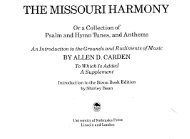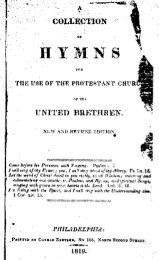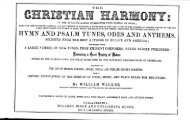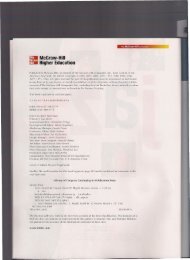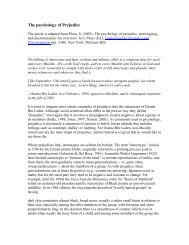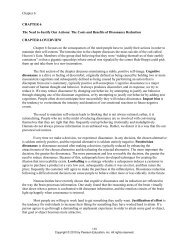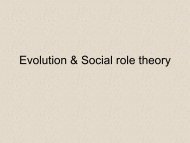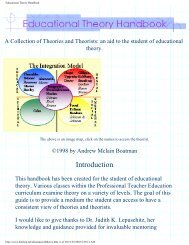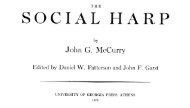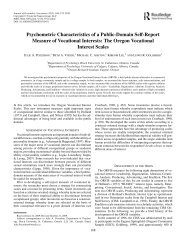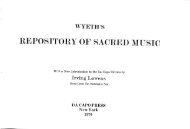Cleavage Structures.pdf
Cleavage Structures.pdf
Cleavage Structures.pdf
Create successful ePaper yourself
Turn your PDF publications into a flip-book with our unique Google optimized e-Paper software.
64 CLEAVAGE STRUCTURES, PARTy SYSTEMS, AND VOTER ALIGNMEI.ITS<br />
91. To substantiate such generalization it will clearly be necessary to proceed to a<br />
comparative census of "ephemeral" parties in Europe. Hans Daalder has made a useful<br />
beginning through his inventory of small parties in the Nctherlands since 1918, the<br />
country wilh the longest record of minimal-threshold PR; see "De kleine politiekc<br />
partijen*-een voorlopige poging tot inventarisatie," Acta politica, I (1965-66), pp. 172-<br />
96.<br />
92. See Chapter 5 by Linz.<br />
93. This is -a major theme in the Norwegian Program of electoral research; see<br />
especially S. Rokkan and H. Valen, "The Mobilization of the Periphery," pp. 111-58<br />
of S. Rokkan (ed.), Approaches to the Study ol Political Participation (Bergen: Chr.<br />
Michelsen IDstitute, 1962), and T. Hjellum, Partiene i lokalpolitikken (Oslo: Gyldendal,<br />
1967). The possibilities of comparativc research on the "politicization" of local govertrment<br />
are discussed in S. Rokkan, "Electoral Mobilization, Party Competition and National<br />
Integration" in J. LaPalombara and M. Weiner, op. cit., pp. 2a1-65..<br />
94. For -a general statemeot of the need for such controls for the character of the<br />
local party alternatives see S. Rokkan, "The Comparative Study of Political ParticiPation"<br />
in A. Ranney (ed.), Essays on the Behavioral Study ol Politics (Urbana: Univ.<br />
of Illinois Press, 1962), pp. 45-90.<br />
95. On the development of this type of data fiIes for computer processing see S.<br />
Rokkan (ed.), Data Archives for the Social Sciences (Paris: Mouton, 1966), and the<br />
forthcoming report by Mattei Dogan and S. Rokkan on the Symposium on Quatrtitative<br />
Ecological Analysis held at Evian, France, in September, 1966.<br />
96. In the United States the ceotral figures in tbis movement were V. O. Key and Lce<br />
Benson. It is interesting to note, however, that their work has in recent years been<br />
vigorously followed up by such experts on survey analysis as Angus Campbell and his<br />
colleagues Philip Converse, Warren Miller, and Donald Stokes; see Elections and the<br />
Polirical Order (New York: Wiley, 1966), Chaps. 1-3 and 9.<br />
97. For a detailed effort to integrate the fndings of various studies of American<br />
student activism see S. M. Lipset and Philip Altbach, "Student Politics and Higher Education<br />
in the United States," Comparative Education Rev., 10 (1966), pp. 320-49. This<br />
article appears also in revised and expanded form in S. M. Lipset (ed.), Sludents and<br />
Politics (New York: Basic Books, 1967). Thc Lipset-Altbach artible, as iell as other<br />
essays in this volume contain extensive bibliographic rcferences. Another comprehensivs<br />
discussion of the relevant literature may bc found in Jeanne Block, Norma Haan, and M.<br />
Brewster Smith, "Activism and Apathy in Contemporary Adolescents," in James F.<br />
Adams (ed.), Contribulions to the Understanding ol Adolescence (Boston: Allyn aud<br />
Bacon, in press). A special issue of the Journal ol Social Issres to be published latc in<br />
1967 will contah a number of articles dealing with "Protest otr the American Campus."<br />
One<br />
The English-Speoking Democrqcir



